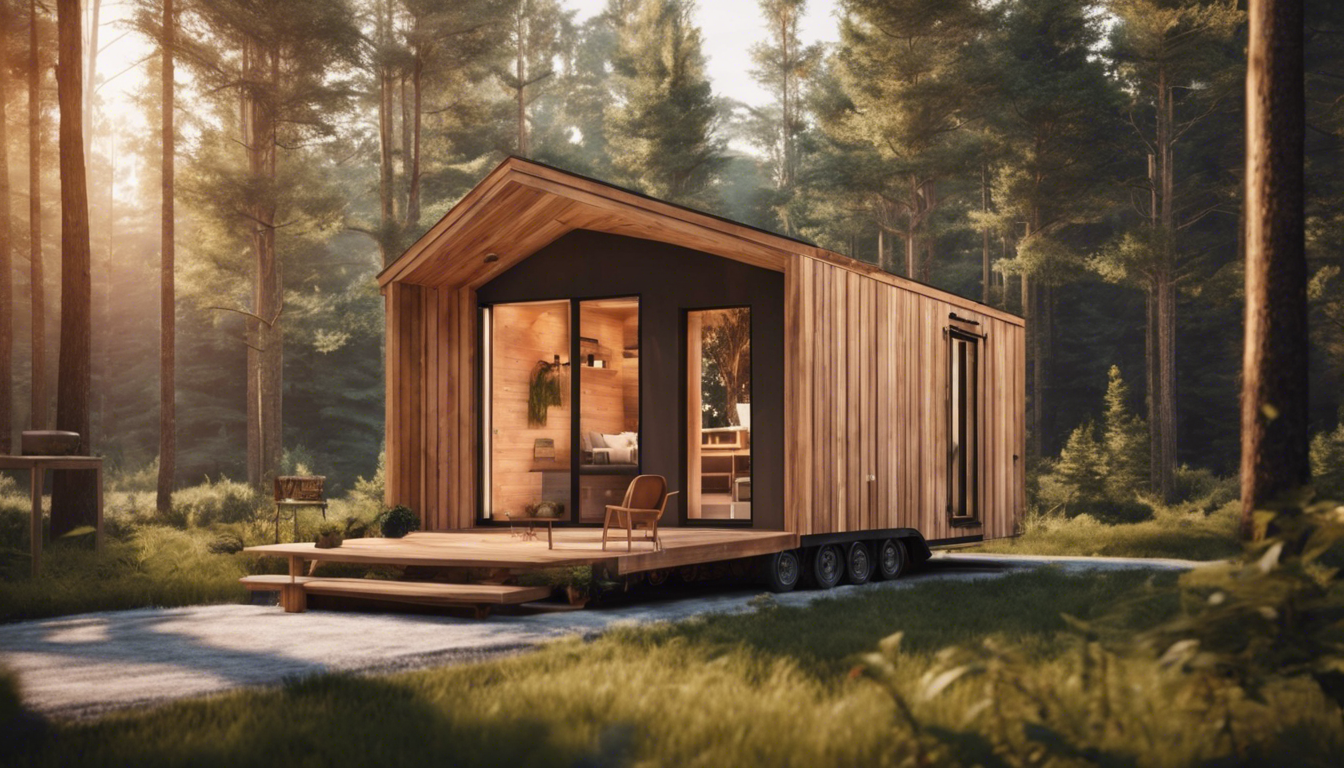Tiny homes offer a unique living experience, combining minimalism with convenience.
Adding light hardwood in tiny homes can elevate both style and functionality.
Light hardwood adds warmth, enhances natural lighting, and creates the illusion of a larger space.
This article will explore the benefits of using light hardwood, guide you in choosing the right type, show you how to design with it effectively, provide maintenance tips, and share inspiring transformations of tiny homes that showcase light hardwood.
Discover how to maximize your space and style with the right flooring.
Key Takeaways
- Light hardwood enhances the aesthetic appeal and functionality of tiny homes.
- Choosing the right type and finish of light hardwood is crucial for achieving a cohesive look.
- Light hardwood can create an illusion of space, making tiny homes feel larger and more inviting.
- Regular maintenance of light hardwood ensures longevity and keeps your tiny home looking fresh.
- Case studies demonstrate the transformative impact of light hardwood in small living spaces.
1. Introduction to Light Hardwood: Benefits for Tiny Homes
Light hardwood is an excellent choice for tiny homes due to its numerous benefits.
First, it contributes to a brighter and more spacious feel, which is essential in smaller living areas.
The lighter colors of hardwood, such as ash or maple, reflect more light, enhancing the overall ambiance.
Second, light hardwood is durable and resistant to wear, making it ideal for high-traffic spaces common in tiny homes.
Additionally, this type of flooring is easy to maintain; regular sweeping and occasional mopping keep it looking fresh.
Lastly, light hardwood works well with various design styles, allowing homeowners to create a cohesive and inviting environment.
Choosing light hardwood in tiny homes not only brings aesthetic appeal but also adds to the functional lifestyle many seek in limited spaces.
2. Choosing the Right Light Hardwood: Types and Finishes
Choosing light hardwood for a tiny home can greatly influence the overall feel and functionality of your space.
Light hardwoods like maple, ash, and birch are popular due to their durability and aesthetic appeal.
Maple offers a fine grain and comes in a range of shades, making it versatile for various styles.
Ash has a unique grain pattern and resists wear well, suitable for high-traffic areas.
Birch features a smooth texture and lighter hue, enhancing natural light in smaller rooms.
When selecting finishes, consider water-resistant options for longevity in tiny homes.
Protective coatings can also enhance the wood’s grain while providing stain resistance.
Remember, the right light hardwood can brighten your tiny home and create an inviting atmosphere.
‘Simplicity is the ultimate sophistication.’ – Leonardo da Vinci
3. Designing with Light Hardwood: Maximizing Space and Style
Using light hardwood in tiny homes can significantly enhance both the appearance and functionality of the space.
Light hardwood creates a bright atmosphere that makes small areas feel larger and more inviting.
The natural tones of light hardwood reflect light, which helps open up cramped spaces.
Additionally, the clean, contemporary look of light hardwood complements various decor styles, from modern to rustic.
When incorporating light hardwood in tiny homes, consider flooring and cabinetry to achieve a cohesive design.
Using consistent materials throughout the space adds visual flow and promotes a sense of harmony.
With its aesthetic appeal and practical benefits, light hardwood is an excellent choice for maximizing space and style in tiny home design.
4. Maintenance Tips for Light Hardwood in Tiny Homes
Caring for light hardwood in a tiny home requires specific attention to maintain its beauty and durability.
Start by sweeping or vacuuming regularly to remove dirt and debris that can scratch the surface.
Use a damp mop with a gentle hardwood floor cleaner to clean the floors without causing excess moisture, which can damage the wood.
Avoid using harsh chemicals or abrasive tools that may harm the finish.
Apply a fresh coat of sealant every few years to protect against stains and wear.
Lastly, place mats or rugs at entry points to minimize dirt accumulation, and add furniture pads to prevent scratches from moving furniture.
These simple maintenance tips will help keep light hardwood in tiny homes looking pristine.
5. Transformative Case Studies: Tiny Home Makeovers with Light Hardwood
Light hardwood in tiny home designs enhances both style and functionality.
Case studies reveal how different homeowners transformed their tiny spaces by incorporating light hardwood floors and accents.
For instance, one couple turned a compact studio into a warm, inviting space by installing light oak flooring.
This choice brightened the room, making it feel larger and more open.
Another case study features a family who used light maple cabinetry in their kitchen.
The light hardwood not only added modern charm but also paired well with other minimalist design elements, achieving a cohesive look.
These transformations show how light hardwood in tiny homes can maximize space while adding aesthetic value.
Frequently Asked Questions
What are the main benefits of using light hardwood in tiny homes?
Light hardwood is beneficial for tiny homes because it creates an illusion of more space, reflects natural light to enhance brightness, and adds a warm aesthetic that makes the home feel inviting.
How do I choose the right type of light hardwood for my tiny home?
When choosing light hardwood, consider factors such as durability, the type of finish (matte vs.
glossy), and compatibility with your overall design theme.
Popular options include maple, ash, and birch.
What design tips can I use to maximize space and style with light hardwood in my tiny home?
Use light hardwood on vertical surfaces, such as walls and ceilings, to draw the eye up and create an airy feel.
Incorporate multifunctional furniture and consistent color palettes to enhance the overall spaciousness.
What maintenance is required to keep light hardwood looking great in a tiny home?
Regular cleaning with a soft broom or vacuum, occasional mopping with a damp cloth, and applying a suitable wood conditioner can help maintain the appearance and longevity of your light hardwood flooring.
Are there any inspiring case studies of tiny home makeovers using light hardwood?
Yes, many tiny homes have successfully incorporated light hardwood.
From open-concept layouts to cozy nooks, case studies showcase how owners have utilized this material to enhance space efficiency and aesthetic appeal.





Leave a Reply